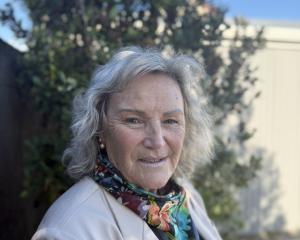In 1908, Richard Henry left Resolution Island in Fiordland, with his dream to create the sanctuary shattered by the arrival and spread of stoats.
One hundred years on, the battle to restore Mr Henry's dream is beginning to swing in the favour of the Department of Conservation.
Last month, 18 Doc staff and volunteers spent two weeks baiting, setting and checking 2300 traps over the island's 230km network of tracks.
Doc Te Anau Biodiversity manager Murray Willans said based on previous island pest control programmes, Doc rangers expected the 258 stoats caught would be the majority of stoats on the island.
Mid-winter was a time when food supplies were low and stoats were consequently easier to induce to visit traps, which were pre-baited twice, to encourage the stoats.
Mr Willans said removing the stoats was a "significant milestone" in creating what will eventually be a "major wildlife sanctuary".
"We've been working towards this for quite a few years and it's great to see it finally happening."
In 2004, the Government announced funding for the removal of stoats and deer from both Secretary and Resolution Islands in Fiordland National Park, covering a 10-year period.
Resolution Island, at 20,860ha, is the largest of the islands on the Fiordland Coast and the fifth largest island in New Zealand.
It is also the largest island pest eradication project in New Zealand.
Last year, following the completion of the initial stoat trapping "knock-down" on Secretary Island the work began on Resolution Island.
Thirteen small huts were flown on to Resolution to accommodate staff and volunteers and 230km of tracks for trap-lines marked and cut.
"For a number of years Doc has been successfully eradicating predators on smaller islands.
"We've proven we can really make a difference to endangered species, but Resolution is the `big league'.
"The sheer size and the variety of habitats on Resolution Island means controlling stoats and deer will be of major benefit to a variety of wildlife.
"Stoats are the reason there are no ground birds such as kakapo or kiwi or other vulnerable birds such as saddleback and kokako on Resolution Island," he said.
Doc had been planning the Resolution Island restoration programme since 2001, but credited the dream to Richard Henry.
Mr Henry, the ranger on Pigeon Island near Resolution Island from 1894 to 1906, was the first person to use islands as wildlife sanctuaries and Doc rangers said they had learned from his early attempts at island based conservation.
Mr Henry transferred hundreds of threatened birds - mainly kiwi and kakapo- from the mainland to several Fiordland islands, including Resolution Island.
An accurate record of the first sighting of a stoat on Resolution Island was documented by Mr Henry in 1900.
He was a keen naturalist and made detailed observations of the fauna in the area - after the arrival of stoats he observed a notable decline in native birds, especially robins and weka.
"With so many stoats already removed from the island we expect to see quite dramatic changes on Resolution Island," Mr Willans said.











